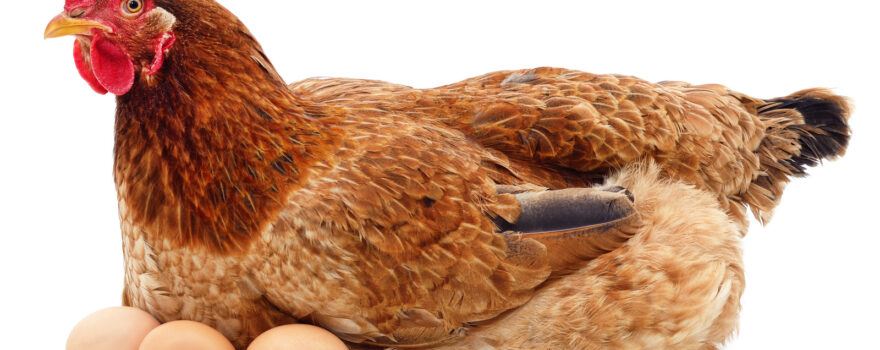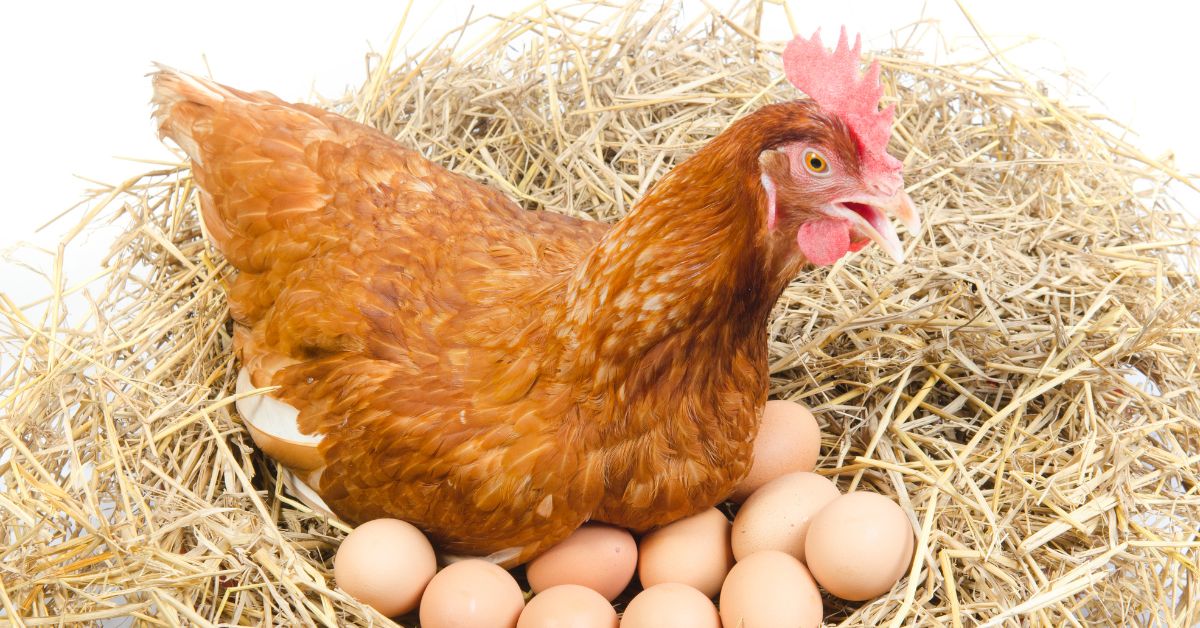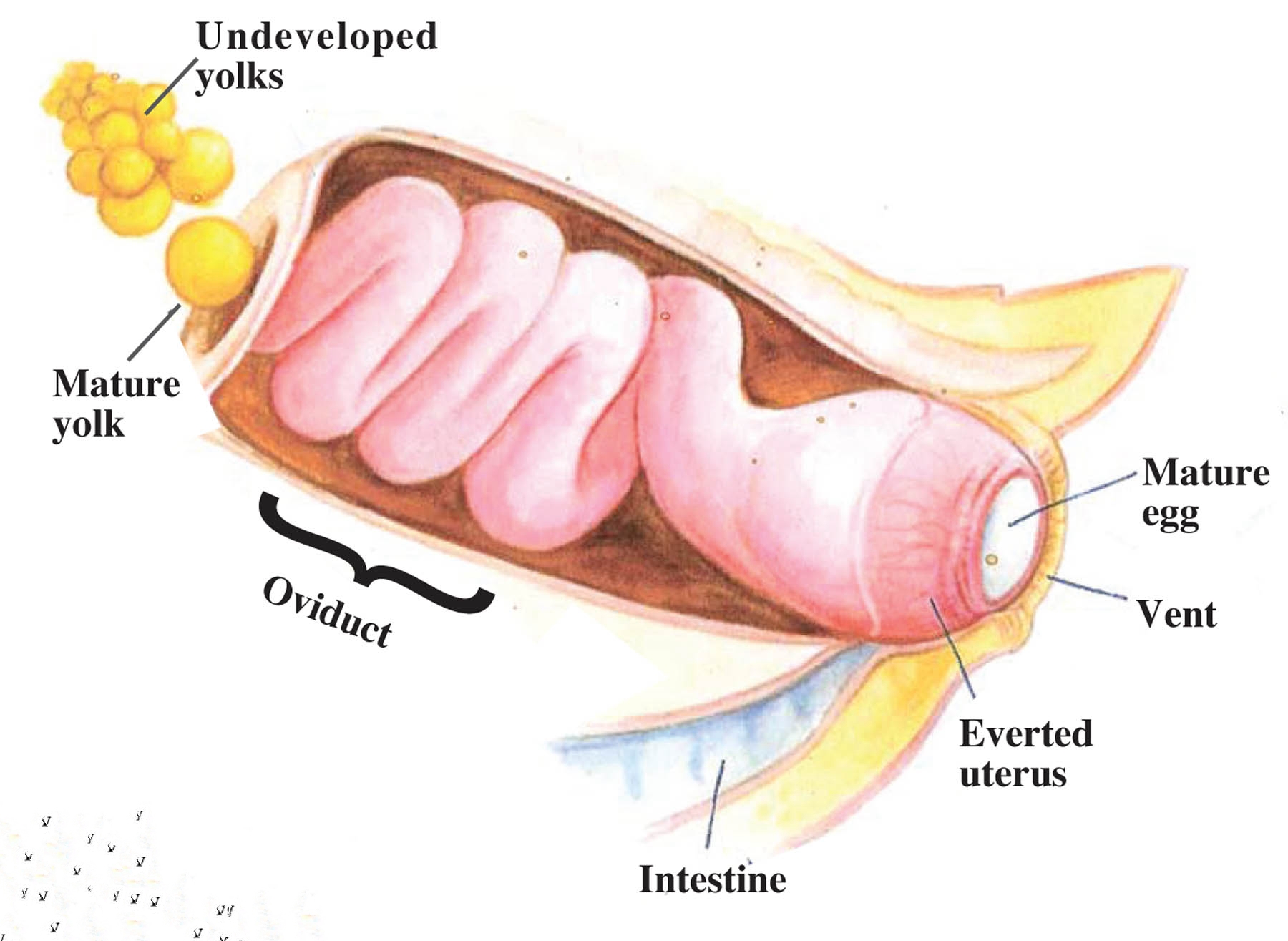
Chicken laying process
To understand the chicken laying process with the sub-sections – Anatomy of the egg-laying chicken, Role of hormones in egg-laying, Physical signs of egg-laying, and Frequency of egg-laying – will provide information about the process of egg-laying, the biological mechanisms that facilitate the process, and the factors that contribute to the frequency of egg-laying in chickens.
Anatomy of the egg-laying chicken
The egg-laying chicken has a complex biology. Its ovary contains multiple developing ovules. The oviduct plays a key role in forming the egg. It adds albumen and shell material before releasing it through the cloaca.
Factors like age, nutrition, daylight, and genetics affect egg production. Estrogen encourages ovulation, while progesterone helps maintain pregnancy. Proper care of flock health helps maximize prolificacy.
Pro Tip: Humane adjustment techniques can make birds happy and healthy. This encourages them to produce reliable harvests over extended periods. This ensures consistent egg availability and extends chick health outcomes.
Role of hormones in egg-laying
The chickens’ egg-laying process is controlled by the hormones they secrete. These hormones manage the whole egg-laying cycle, from follicle development to ovulation and egg release. Luteinizing hormone (LH) starts the egg production. It causes the ovaries’ follicles to mature into yolky ova. Progesterone then triggers the mature follicles to release an ovum, known as ovulation. This hormonal pattern continues over a chicken’s lifetime.
For eggs to form, hens must get adequate nutrition, such as calcium, protein, and vitamins. They must also have access to feed, water, good lighting, and proper air circulation. Generally, hens lay effectively for up to two years before their productivity reduces due to age or disease. The shells of the eggs may thin due to less calcium absorbed through digestion.
Incredibly, research in “Scientific American” exposed that chickens can lay eggs in almost every color of the rainbow – from sky blue to lavender, rose pink to chartreuse green – depending on their breed! A physical sign of impending egg-laying is the hen’s squatting position – so no need for a crystal ball!

Physical signs of egg-laying
Egg-Laying: Physical Indicators
Hens show certain physical signs when they lay eggs. Farmers can use these indicators to determine if the hens are doing well or if any health problems exist.
- More and longer visits to nest boxes
- Squatting or crouching
- Clucking during or after egg-laying
- Bigger comb and wattle before egg-laying
- Noticeable ovaries and vulva check
- Changes in diet, energy consumption, and appetite
Keep an eye on these physical signs. They can reveal disease or nutrition problems.
Hen Hot Tip: A chicken once laid an egg that was almost 12 inches around and weighed a pound! (Source: Guinness World Records) Get an egg-laying machine with a snooze button!
Frequency of egg-laying
Chickens have their unique egg-laying process. Five key aspects that affect the frequency are: age, breed, season, diet and environment, and health and stress levels.
Eggs can be white, brown, green, blue, and even brightly hued, depending on the breed! It takes around 25 hours for a hen to produce an egg.
A Madagascan family discovered that playing classical music in the chicken coop improved the frequency and quality of eggs.
Before chickens can lay eggs, they need food, water, and a private space.
Preparing for egg-laying
To prepare your chicken for egg-laying with maximum productivity, you need to ensure that their needs are met. This includes creating a comfortable nesting area, providing a nutrient-rich diet, ensuring proper lighting conditions, and monitoring for potential health issues. Paying attention to these sub-sections can provide a better environment for your chickens to lay eggs.
Creating a comfortable nesting area
Make sure to give your feathered friends a nice, comfy nesting space! Here’s how:
- Pick a safe spot that’s away from disturbances and predators.
- Gather soft material like hay, straw, shavings, or grass clippings. Add herbs like lavender, rosemary, or mint for a soothing scent.
- Provide enough space for each chicken to lay eggs peacefully. Have at least one nesting box for every 3-4 hens.
- Give them a dust bath section outside the coop – this is where they bathe in dry dirt and fluff their feathers.
- Clean the nesting area daily and replace dirty bedding often.
Did you know? Chickens need around 14 hours of daylight to stimulate egg-laying hormones. Feed them a healthy diet full of nutritious grains and greens to get excellent eggs.
Providing a nutrient-rich diet
A balanced and nourishing diet is vital for egg-laying hens. It’s imperative to give enough protein, carbs, vitamins, and minerals. Veg, fruit, grains, and beans can help supply nutrients.
Calcium-rich foods can help form strong eggshells and assist with bone health. Hens need more calcium before laying than at any other time. Offering crushed oyster shells or limestone grit can help meet their needs.
Keep feed clean and dry. Avoid wet or spoiled food that can hurt your birds.
Pro Tip: Feed them on a regular schedule and watch their diet to make sure they get the right nutrients during their laying cycle.
Pro Tip 2: Remember to give your chickens a light show for egg-laying!
Ensuring proper lighting conditions
Proper Illumination for Optimal Egg-Laying
Lighting conditions are crucial for hens’ egg-laying. Suitable illumination keeps their circadian rhythm and stimulates hormones that regulate egg production. Light should be similar to daylight, with a wavelength of 600-700 nanometers. Long enough for birds to detect photoperiod changes.
Artificial lighting may be needed when natural light isn’t enough. A timer-controlled LED system at 10-20 lux can simulate dawn and dusk, reducing sleep disturbances and enriching the bird’s environment. Bulbs should not be overcrowded, to avoid malnourishment due to competition over feed.
Light-and-dark cycles must be consistent, from 4 weeks old until 16 weeks when they reach sexual maturity. With good illumination and temperature control, pullets may lay eggs within 2 months of life.
A farmer installed an “Egg-O-Matic” device that simulates a clucking sound after egg-laying. This encourages young chickens to use nesting boxes.
Monitoring bird health is essential unless you want salmonella-infused sunny-side-up eggs.
Monitoring for potential health issues
Observing potential health issues is essential for successful egg-laying prep. Keep an eye on the hen’s activity, feed intake and body weight for any abnormalities. Monitor the bird’s behavior and physical signs, like comb color and feather condition. This allows you to identify any distress or diseases early and address them. Result? Higher quality eggs and a healthier flock.
Speak with your vet about biosecurity measures, vaccination regimens, and disease monitoring for optimal results.
According to WebMD vets, eggs are a nutrient-rich source of high-quality protein.
From ovulation to hatching, egg-laying is a stress-free way of getting more chickens in your coop, with maximum yolk production!
The egg-laying process
To understand the egg-laying process of a chicken, it is crucial to know the different phases that they go through. With “The egg-laying process” in ‘Chicken Laying an Egg’, you’ll learn the pre-laying behaviors, actual egg-laying process, post-laying behaviors, and collecting, and storing eggs.
Pre-laying behaviors
Females of various species display specific behaviors before they lay their eggs. These behaviors are essential for successful reproduction.
“Nesting” is one of these behaviors. Females search for a suitable place to lay their eggs, be it a part of the natural habitat or a nesting box made by humans. They inspect and prepare the area for egg-laying, becoming more vocal and territorial. They also eat more food to prepare for the egg-laying.
Environmental cues can help female animals determine when to start the process. Things like changes in temperature or moisture, or sensing other members of their species laying eggs.
Pro Tip: Proper nesting areas can improve chances of breeding success and encourage natural nesting behavior.
Actual egg-laying process
The egg-laying process in birds is an essential part of their reproductive cycle. To comprehend this, we need to look at avian anatomy and physiology. Ovulation is the first step, where a mature egg is released from the ovary into the oviduct. It develops its shell and contents as it travels through the oviduct. At the end, the egg is laid through the cloaca, which is the common opening for the excretory, urinary, and genital systems. The eggshell hardens within a few hours to protect its content until hatching.
Different species have diverse ways of regulating their reproductive cycles, which affects how they lay eggs in terms of timing and environment. They also lay eggs with various shells, thicknesses, and colors due to breeding strategies and adaptation to different environments.
To guarantee egg quality, nutrient-rich diets with adequate vitamins are important. Warmer temperatures are also vital as low room temperature may reduce melatonin production, resulting in low protein synthesis for yolks. Cleanliness when handling eggs before incubation is also important, as it helps avoid bacterial contamination and improves hatching success rates.
After laying, chickens become Olympic athletes, with their post-laying activities including sprints, hurdle jumps, and synchronized flapping.
Post-laying behaviors
After a female bird lays an egg, she’ll take action to ensure the welfare of her young. These post-oviposition activities include building a nest, incubating eggs, and protecting them from predators. The mother bird will also inspect her eggs, adjusting their positions to keep the temperature just right.
Some species don’t start incubating until they have a full clutch. This ensures all the chicks hatch at once, increasing their chances of survival.
It’s key to protect bird nests during this post-laying phase. Disturbances can cause abandonment or premature hatching of chicks, slashing their survival rate. Furthermore, keeping nesting sites free from extra noise and hunting can help the chicks.
Providing food or water close to nesting sites can help adult birds care for their offspring better. So, it’s essential to show birds consideration during the post-laying stage to give them the best chance of success.
Collecting and storing eggs
Egg Collection and Preservation Techniques
Gather eggs frequently to keep them safe! Always make sure the collection site is clean and free of germs. Wash eggs carefully with mild soapy water or a sanitizing solution. Eggs can be stored for up to six months – just check regularly for any signs of degradation.
For excellent egg preservation, watch out for any degradation in quality. Remain vigilant when dealing with prime shelf-life animal goods like these. Collect and preserve your fresh eggs promptly, and don’t let your stock run short!
It’s a constant battle for chickens – laying eggs and avoiding pooping at the same time. So don’t miss out on ensuring freshness every morning by collecting eggs at sunrise!
Common egg-laying issues
To understand common egg-laying issues among chickens and their solutions, delve into the sub-sections of egg binding, soft-shelled eggs, low egg production, and egg-eating behavior.
Egg binding
Egg Binding is a condition that affects hens and other birds. Symptoms include fluffed feathers, decreased appetite, straining, and dehydration. This can occur due to poor nutrition, obesity, or stress.
Left untended, it can lead to serious issues, like prolapse, which can be fatal. An avian veterinarian should be consulted if such symptoms arise.
Studies show overcrowding among chickens can lead to Egg Binding. Monitor your flock’s living conditions and ensure enough space to avoid this issue.
Why not try something different? Instead of stress balls, lay a soft-shelled egg and watch it crack under pressure!
Soft-shelled eggs
Hens may lay soft eggshells, due to factors like calcium deficiency, lack of sunlight, and stress. To help, give them a balanced diet with calcium and Vitamin D3. Grit aids digestion. Allow them access to natural sunlight. Check your flock for soft shells. Lemongrass oil spray can help stressed hens.
Why did the chicken stop laying eggs? She was allergic to her feather duster!
Low egg production
Hens’ Production Declining?
Egg laying can go down with age, but many factors can affect it. Poor nutrition, lighting, water or environment, heat or cold, and disease are the common causes. To promote production, make sure backyard hens are healthy, happy, and safe.
Supplemental Care for Hen’s Wellbeing
Ventilation and nest box space are important. High-quality feed with the right protein levels can improve egg quality and quantity. Grit can help nutrient absorption for the best egg formation. Regular check-ups by a vet can spot potential issues early.
Uncommon Causes of Low Egg-Laying
Fluctuating light cycles, social pressures in the flock, or even too little sunlight can cause low egg production. According to the University of Maryland Extension’s Department of Animal Science: “A hen needs 24-26 hours to produce an egg; thus, a chicken exposed to sunlight for less than 14 hours may take longer than 26 hours.” Why worry about egg-eating when you can just make an omelet?
Egg-eating behavior
Challenging behaviors in hens may manifest differently, including bizarre and unwanted egg consumption. This is a major issue for poultry farmers. When diets are low in calcium or protein, hens may start to eat their eggs. This is bad for their welfare and the financial stability of the farm.
Handle this behavior strategically. Farmers can change their feeding methods, add distractions in nests, or separate the egg-eaters. Watering or misting can help existing eggs.
Poor management can lead to pecking injuries and cannibalism. Early detection and correction of typical poultry problems can limit the outbreak and keep bird productivity up.
Act fast if you notice anything strange. Regular health checks can prevent costly diseases and save time later. Great care leads to great eggs!
Proper care for egg-laying chickens
Proper care is essential for egg-laying chickens. Here are 3 factors to think about:
- A balanced diet with protein, calcium, vitamins, and minerals.
- A regularly cleaned henhouse for health and hygiene.
- Space for the birds to move around during the day.
Other factors like breed, age, and temperature are important too. To reduce stress, natural light or shade can help. Reports show hens can lay eggs under red lights with less disruption. Proper care = healthier chickens & more eggs!
Frequently Asked Questions
1. How often will my chicken lay an egg?
Chickens typically lay one egg per day, though this can depend on the breed, age, and health of the chicken.
2. When can I expect my chicken to start laying eggs?
Most chickens begin laying eggs around 6 months of age, though this can also depend on breed and environmental factors.
3. Do I need a rooster for my chicken to lay eggs?
No, a rooster is not necessary for a chicken to lay eggs. Hens will lay eggs regardless of whether there is a rooster present or not.
4. How can I tell if my chicken is about to lay an egg?
Some signs that a chicken may be about to lay an egg include vocalizations, nest-building behavior, increased activity, and squatting.
5. How long does it take for a chicken to lay an egg?
It typically takes a chicken around 24-26 hours to lay an egg, with the process starting all over again the following day.
6. What can I do to ensure my chickens lay healthy eggs?
Providing your chickens with a healthy diet, clean living space, and access to fresh water can all help ensure that they lay healthy eggs. Regular veterinary check-ups and attention to any health concerns can also be important.
